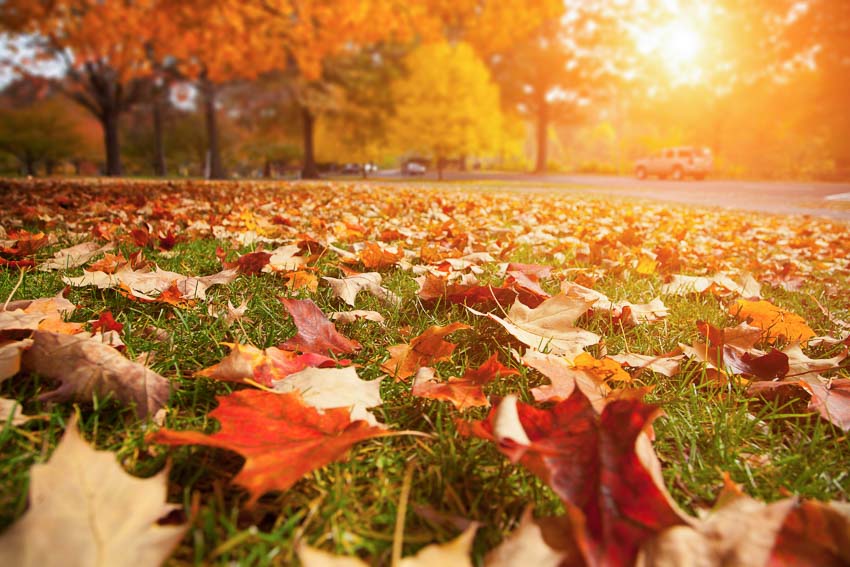The large deciduous trees in your yard provide shade, beauty, clean air, and habitat for wildlife. But look out when their leaves start to fall. Prepare for one of the biggest chores of the year by discovering the best ways to remove leaves from your yard.
Why It’s Essential to Remove Leaves from Your Yard
Most people spend a lot of time and money taking care of their lawn, ensuring that it looks its best. And when the leaves come off the trees in the fall, it can be a daunting task trying to keep up with them.
How important is it to remove the leaves from your yard?
Left on your lawn for just a few weeks, leaves can make your grass patchy by blocking out sunlight. If you leave them to decay over winter, the damage can be even worse.
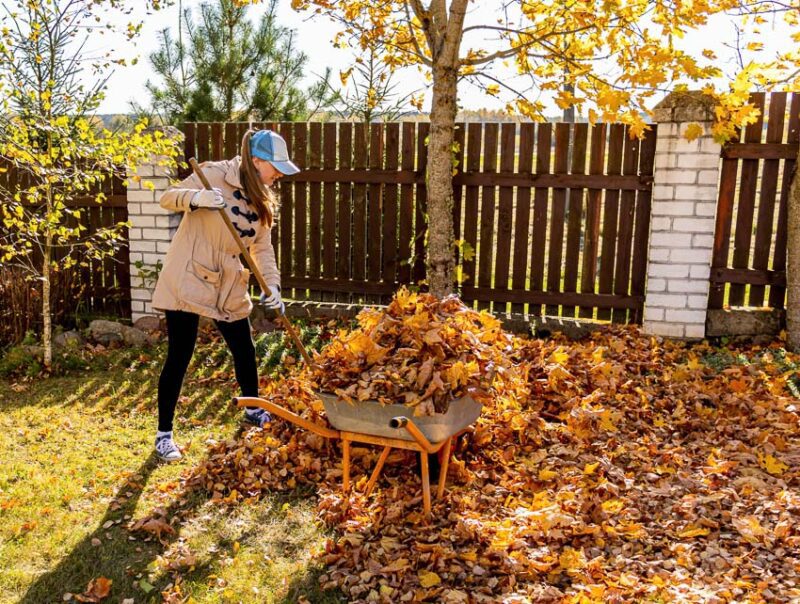
It’s not just your lawn, either. Keeping leaves out of your flower beds, shrubs, and stone mulch can be just as big a problem as keeping them off your lawn.
When left on your driveway, leaves create slipping hazards and stain your concrete. Furthermore, on your roof, they stop the flow of rainwater and clog up your gutters.
In your mulch, they break down and create the perfect place for weeds to grow.
Evaluating Your Options: The Best Ways to Remove Leaves
What’s the best way to remove leaves from your yard? There are several good ways, and you have quite a few options. Learn more about different ways to remove leaves and the pros and cons of each, to find the most efficient method for your yard.
Removing leaves is hard work, so be prepared for a workout. Wear the appropriate protective gear, no matter what tool you’re using. Work gloves and safety glasses are essential, but you should also consider ear protection and dust masks when working with dry leaves. That’s especially because some types of equipment are noisy and kick up a lot of dust.
Using Traditional Rakes: Pros and Cons
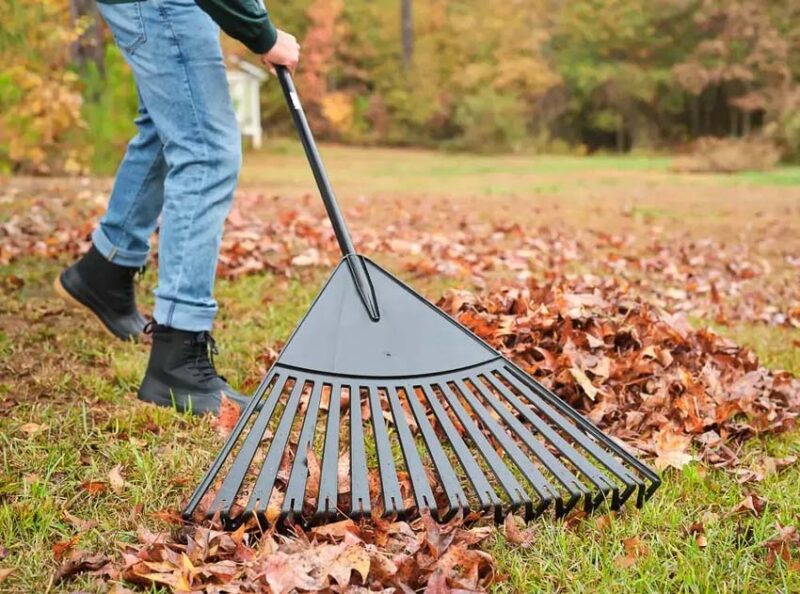
Raking is a tried and true method of removing leaves from your yard. Rakes are inexpensive and effective, but raking can be back-breaking labor, and you might develop a few blisters if you’re not careful. At a minimum, you will likely experience hand, shoulder, and elbow fatigue while raking.
Using a rake for leaf removal helps to have the right type of rake. The best rake for leaves is a lightweight plastic or aluminum leaf rake. They are lighter and cover a much larger area than a hard steel rake. You can even purchase one with dual tines, which require fewer passes to pick up all the leaves.
Tips for Using a Leaf Rake
Keep your back straight when raking, and bend at the knees. Stand up straight every 7 to 10 minutes to stretch your back muscles. You don’t want to overdo it. Moreover, you should wear gloves to prevent blisters.
Instead of raking your leaves into a pile, rake them onto a tarp. That way, moving them to your compost bin or bag them is easy.
Leaf Blowers: Efficiency and Cost
Leaf blowers make it easy to blow leaves out of corners and crevices. They are also perfect for cleaning driveways, porches, and sidewalks. They are also the best tool for cleaning gutters and removing leaves from mulch.
When using a leaf blower, work in one direction across your lawn. It’s easiest to work in a wide arc rather than a straight line, and when you come up against a wall or a fence, work along the edge rather than trying to blow leaves up against it.
Gas-Powered vs. Electric vs. Battery-Operated Leaf Blowers
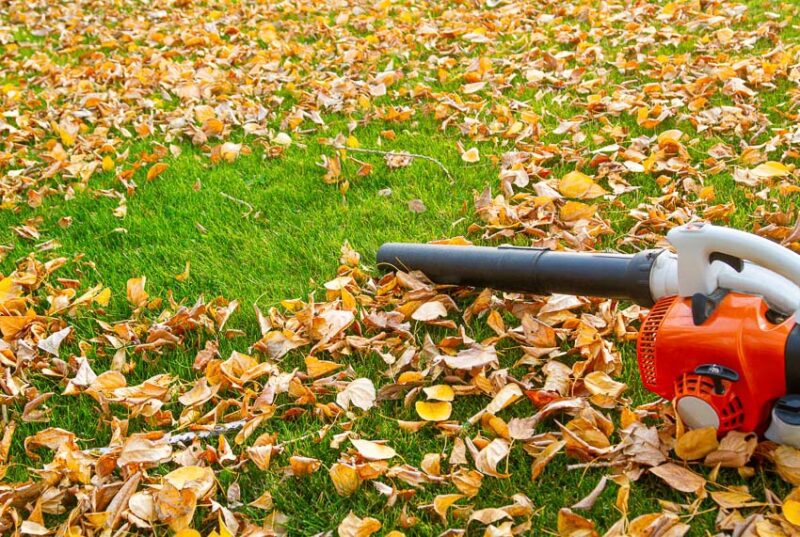
You have choices when it comes to removing leaves from your yard with a leaf blower. Gas-powered leaf blowers are the most powerful but noisier, and some municipalities are banning gas-fueled lawn equipment.
Electric leaf blowers are lighter, quieter, and less expensive than those with gas engines, but they aren’t as powerful. They do a good job on small yards, but the electric cord limits you.
Battery technology for power tools has come a long way, and battery-powered leaf blowers are the lightest, quietest, and easiest to use of all leaf blowers. On the downside, each 40V battery only lasts for about 30 minutes.
Mulching Leaves: An Eco-Friendly Alternative
There are several ways to mulch leaves. Mulching lawnmowers make it incredibly easy because they pick up leaves as you mow, chew them up into tiny bits, and spread them back on your lawn.
This method gives your lawn plenty of nutrients, improves the health of your soil, and eliminates the need to dispose of leaves. The microorganisms in your soil will help break down the organic matter in the leaves.
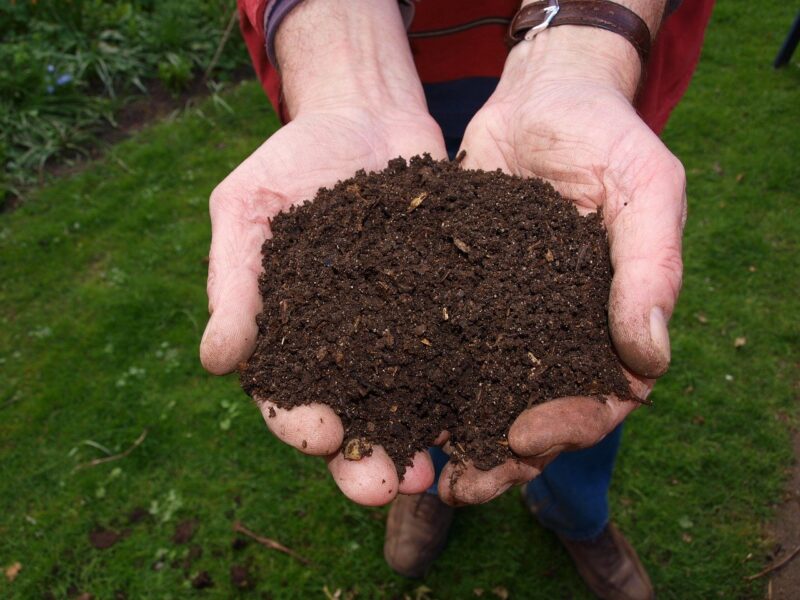
You can also mulch your raked leaves with a standalone leaf mulcher. Also called leaf shredders, electric leaf blowers can handle a lot of leaves and turn them into mulch to spread on your flower beds and garden.
What Can You Do With Mulched Leaves?

Mulched leaves are like gold to gardeners. They contain nutrients and organic matter that will improve your soil and make it drain better. Mulched leaves are too valuable to dispose of as organic waste, and if you live in a municipality that charges for yard waste disposal, a leaf mulcher will pay for itself quickly.
Spread 2 to 3 inches of mulched leaves on your flower beds and vegetable garden plants. Use 3 to 6 inches for trees and shrubs. The leaf mulch will protect its roots, and much of it will disintegrate by spring.
Mulched leaves are excellent for use in compost piles. Mix them 50:50 with green grass clippings, which will provide nitrogen and moisture to assist with the decomposition of the leaves.
Leaf Vacuums: Speed and Effectiveness
Some blowers have a vacuum function for removing leaves from your yard, but you can also purchase a separate leaf vacuum tool. Yard vacs make it easy to get in hard-to-reach places where it’s impossible to rake, especially in flower beds and shrubs.
Leaf vacuums have a metal impeller that chops leaves into pieces less than half an inch. It then stores the leaf mulch into a bag that attaches easily to the bottom of the leaf vacuum. It can turn several leaves into one bag of leaf mulch, which you can use in your garden or compost.
Like leaf blowers, handheld leaf vacuums come in gas-powered, electric, and cordless options, with similar advantages and disadvantages for various models. When shopping for a leaf vacuum, choose one with adequate suction power, a leaf mulching function, and adequate bag capacity.
Walk Behind vs. Handheld Leaf Vacuums
Most people who use leaf vacuums find the backpack models adequate for their small yards. However, if you have a large yard or physical conditions that make it hard to haul around a leaf vacuum, using a walk-behind or tow-behind leaf vacuum is one of the best options.
DIY vs. Hiring a Professional: What’s Best for Removing Leaves?
Choosing between DIY leaf removal and hiring a professional is mostly a matter of time, money, and physical capabilities. You can save money with DIY leaf removal, but if it’s not how you want to spend your weekend, hiring a professional is the way to go.
The Benefits of DIY Leaf Removal
There is no doubt that DIY yard care saves you money. Many people enjoy taking care of their yards.
Maintaining a well-manicured yard is good for your mental health, as setting goals and working to achieve them positively impacts your self-esteem.
There are also positive health benefits associated with working in your backyard, and if you have children, leaf removal is a fun activity to do as a family.
The Advantages of Hiring a Professional
If you don’t have the tools, time, or physical capabilities, hiring a professional may be a better option for you. Not everyone has space for a compost pile in their yard or wants to deal with bags of leaves they’ve collected.
Internet search features have made finding professionals for any service you need easy. To find a leaf removal service, search “leaf removal near me,” and you’ll be presented with plenty of options. You can also ask friends and family members for recommendations.
Cost-Benefit Analysis: DIY vs Professional
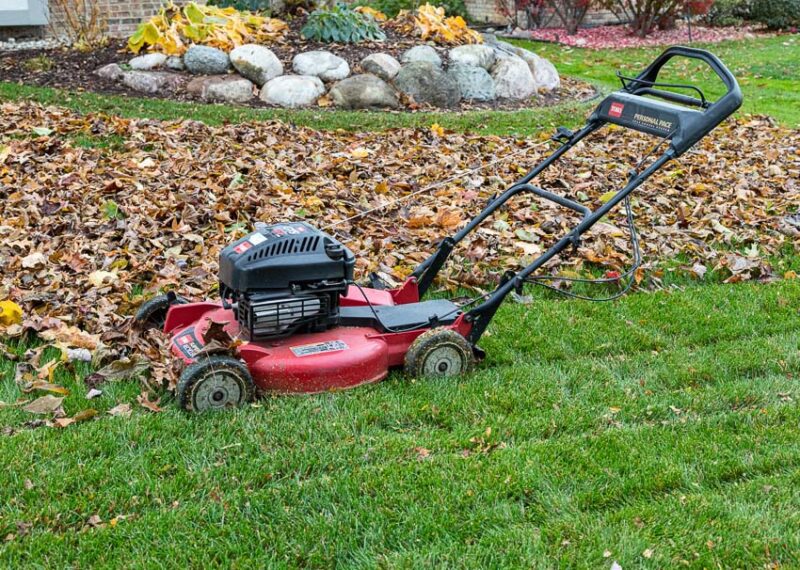
Homeowners pay an average of $300 per year to remove leaves from their yards. If you’re considering doing it yourself, you could easily pay for your equipment with the money you save. However, you also need to consider other expenses, including the cost of hauling and disposing of leaves, safety gear, and lawn bags.
Here are the average costs of leaf removal equipment:
| Type of equipment | Price range |
| Leaf rake | $10 to $40 |
| Gas leaf blower | $125 to $400 |
| Battery-powered leaf blowers | $30 to $200 |
| Mulching lawn mowers | $140 to $570 |
| Standalone leaf mulchers | $150 to $600 |
You can also rent some types of equipment to save money. The half-day, full-day, or week can rent leaf blowers. Renting one for half a day usually costs about $30 to $40.
Understanding the Average Cost to Remove Leaves
When comparing DIY leaf removal costs vs. professional costs, it’s important to be specific about what services are included in the price. Learn more about the average cost to remove leaves and what is included in the price.
Factors That Influence the Cost of Leaf Removal
The cost of leaf removal depends on the following factors:
- Method–there are different prices associated with raking, blowing, and vacuuming.
- Frequency–the more often you have your leaves removed, the more it will cost.
- Package rates–a seasonal contract may cost less overall than having all your leaves removed at one time.
- Tree density–the more trees you have, the more leaf debris to clean up.
- Related services–roof cleaning, gutter cleaning, waste disposal, and other services will add to the overall cost.
Budgeting for Leaf Removal: What to Expect
- Most landscaping professionals charge a base fee per visit to cover travel time and expenses. On average, a minimum fee is $50 to $100 for each visit.
- Leaf removal costs about $25 to $60 per hour, but you may have to pay extra to dispose of each bag of leaves.
Frequently Asked Questions About Removing Leaves
What is the fastest way to remove leaves from my yard?
A leaf blower vacuum combo is the fastest way to remove leaves. They work better in some areas than others, especially in removing leaves from your driveway, patios, and areas with rock landscaping. On your lawn, the fastest way to remove leaves is a mulching lawn mower.
Is it necessary to remove leaves from the lawn?
There are a lot of nutrients in leaves, but when they fall in one spot, they develop a thick mat that can smother your grass. They won’t necessarily stay on your lawn, either, and they can make the rest of your landscaping messy and cluttered.
Can I use leaves as mulch in my garden?
Leaves make excellent mulch for vegetable gardens, flower beds, and trees. The best way to use leaves as mulch is to shred them with a leaf mulcher. Otherwise, they create a thick mat that blocks moisture and oxygen and smothers your plants’ roots.
How much does a professional leaf removal service typically cost?
Professional leaf removal services usually cost about $40 to $60 per hour. The average cost of leaf removal is $250, but the price will vary depending on the size of your yard and how frequently the leaves are removed.
When is the best time to remove leaves from the yard?
The best time to remove leaves from your yard is before heavy rains or snow. Once leaves get wet, they develop a thick mat that is much harder to remove. If you don’t get to them before the snow falls, you’ll have to wait until spring, and snow mold could damage your lawn.

